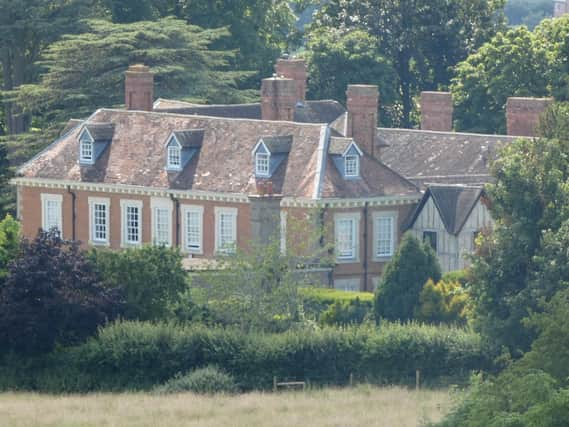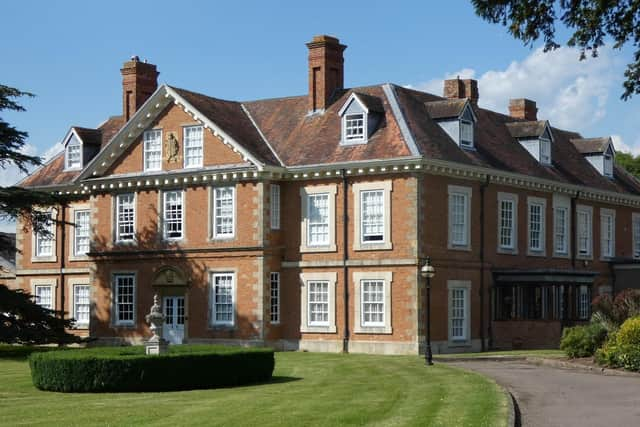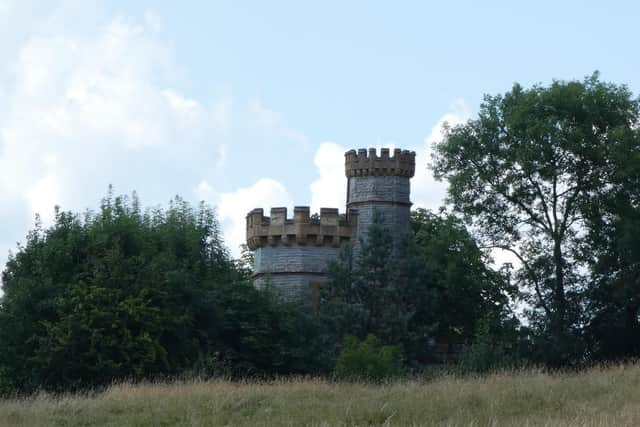Forgotten local histories: How a grand house in south Warwickshire's Welcombe Hills played a role in the Gunpowder Plot


George Evans-Hulme is an academically trained historian and researcher for the Kenilworth History and Archaeology Society. Over the next few weeks he will be looking at sites or buildings with local historic significance. This week he writes part two of his history of the Welcombe Hills.
The Forgotten History of the Welcombe Hills Part II – Clopton House and Tower
Advertisement
Hide AdAdvertisement
Hide AdThe historian GM Trevelyan, born at Welcombe House (now the Welcombe Hotel) and described by Sir David Cannadine as ‘the most famous, the most honoured, the most influential, and the mostly widely read historian of his generation’, used to spend his time wandering the Welcombe Hills when in residence at his family’s winter property.


As ‘child, boy and young man’ he would roam among the woods and primroses to the north and west of the house, imagining them to be ‘the wrecks of the forest of Arden, as perhaps some of them were’. At the top of the Welcombe Hills, Trevelyan wrote in 1949, ‘stands the little old country house at Clopton’. It is the history of this house that forms the focus of this article.
If one were to follow in the footsteps of Trevelyan, rambling from the Welcombe Hotel in a westerly direction towards Clopton House, it is worth pausing to admire the view from the top of the ‘Belt’ ridge that separates the two properties. From here, on the west side of the treeline, on a clear day, one can see as far away as the Malvern Hills. If you direct your gaze further south, you will be able to see the northerly edge of the Cotswolds.
A detour south along the road on the ridge will take you to the Clopton Tower. The polygonal lias and Cotswold stone tower was built c. 1850 for C. T. Warde, the then owner of Clopton House. The tower’s ultimate purpose remains a mystery, but many consider that it was built as a belvedere for Warde, essentially to be used as a pleasure house. An extension was made to the tower in 1991, and it is now in private hands.
Advertisement
Hide AdAdvertisement
Hide AdFrom the Clopton Tower, one must turn to the north west and walk down into the parkland towards Clopton House, which should now be emerging on the horizon. Similar to the site of the Welcombe Hotel, there is evidence of a medieval property on the site of Clopton House. The main house, now, consists of four wings grouped around a central courtyard; the south west and south east facades are both 17th century, their north west and north east counterparts are 16th century.


Previous owners of the house include Joyce Carew (nee Clopton; bap. 1562- d. 1637) who was the first daughter and heir of William Clopton. The former was married to George Carew, earl of Totnes (1555-1629) a diplomat and statesman who once served as the Master General of Ordnance (responsibilities of which included the condition and readiness of the military’s artillery and fortifications).
An owner of greater notoriety, however, was Ambrose Rookwood (1578-1606) one of the conspirators in the gunpowder plot. Rookwood, who came from a staunchly Roman Catholic family, took up residency at Clopton House just prior to that fateful day in November 1605, after being persuaded to do so by Robert Catesby (the main leader of the gunpowder plot) as it was a convenient location for its vicinity to the homes of the other plotters. In the end, the plot failed, and Rookwood met a grizzly fate of being hung, drawn and quartered along with several other conspirators, including Guy Fawkes, in the Old Palace Yard of the Palace of Westminster.
The coach house and turret on the north west corner of the property formed part of the refurbishments by C. T. Warde and were part of a larger restoration project between 1839-46. The house was restored again in 1904, and then, in 1986, it was converted into flats.
Advertisement
Hide AdAdvertisement
Hide AdFeaturing quotes and extracts from (in alphabetical order): D. Cannadine, G. M. Trevelyan: A Life in History, (London: Harper Collins, 1992); and: G. M. Trevelyan, An Autobiography and Other Essays, (London: Longmans, 1949).